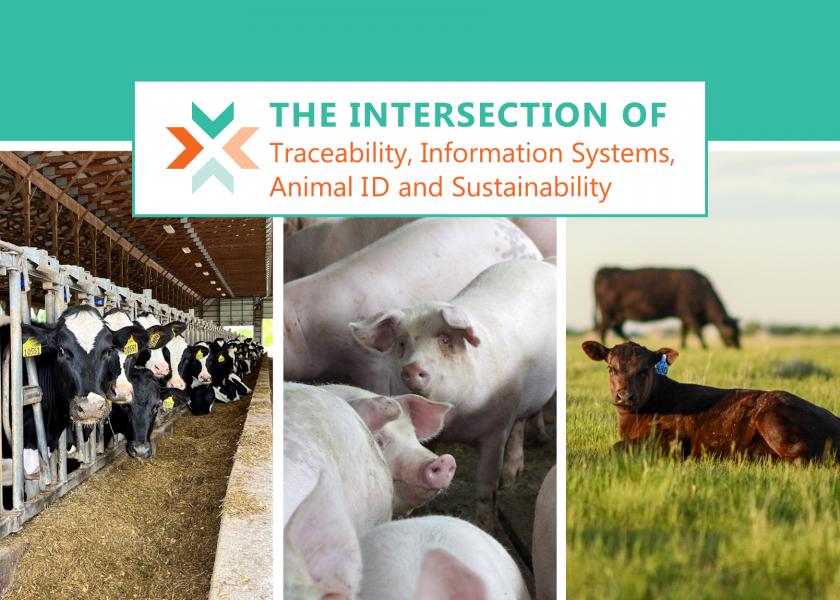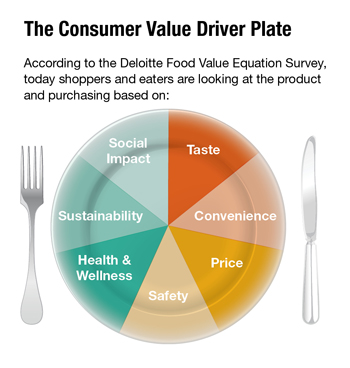Farm Journal and the National Institute for Animal Agriculture Team Up to Help Animal Ag Share Its Story

“Everybody works for somebody. Me, I work for everybody in these United States that steps into a butcher’s shop for a T-bone steak, and you work for me. There’s not much difference.”
In the 1963 western movie McLintock!, G.W. McLintock, played by John Wayne, shared that succinct description on how the protein value chain works with a ranch hand. However, like many aspects of business and life, we know ensuring a safe, wholesome, affordable food supply is a bit more detailed and intertwined than McLintock describes.

Not to make this too convoluted but each of these factors is a proverbial onion with many layers — and the more you peel the more you might experience a bit of discomfort before you reach the glorious result. You might say it’s like caramelized onions on a juicy steak or chop – representative of consumer trust in animal-derived proteins and animal agriculture’s social license to operate.
Now, add one more layer to the onion – the one pertinent to this discussion. How does animal agriculture collectively ensure we meet shoppers’ and buyers’ increased interest in and demand for greater transparency about the meat, poultry, milk, eggs and fish they choose for themselves and their loved ones?
While more complicated than this, consumer trust and social license are preserved and enhanced with data points that when aggregated and looked at holistically “tell” a story — a story of a protein-rich food that is delicious, nutritious, sustainable and accessible. Farm Journal and the National Institute for Animal Agriculture (NIAA), in a newly formed program that explores the intersection of traceability, information systems, animal identification and sustainability, believe these four areas can guide animal agriculture to its “story.”
As leaders from Farm Journal and NIAA first began discussing this collaborative initiative, foundational research was conducted of farmers and ranchers raising beef and dairy cattle and pigs. Many data points from this inaugural research when combined with consumer/shopper research indicate there are many reasons it is time to more fully explore how animal identification, information systems and traceability contribute to the sustainability – environmental stewardship, social responsibility and economic viability, of animal agriculture. The below data points are of particular interest.

In their annual Power of Meat study, the Food Industry Association (FMI) and the North American Meat Institute (NAMI) continue to find consumers believe “meat/poultry belong in a healthy, balanced diet” – 76% agreed with this statement in 2020 and 73% in 2021.
Permission to Consume
Insights from the same studies demonstrate to animal agriculture the need to give consumers “permission” to consume animal-derived proteins. The need for “permission” stems from increased interest in how animal agriculture affects health and wellness, environmental stewardship, animal welfare, worker health and safety, and more. To provide this “permission,” animal agriculture needs to share its story, which must include robust data points.
Through this collaboration, Farm Journal and NIAA will:
-
Explore and dive into the market conditions affecting beef, dairy and pork, such as foreign animal disease landscapes; export demand and opportunities; consumer trust; and on-farm and ranch management.
-
Provide a platform to explore the strengths, weaknesses, opportunities and threats to greater connectivity among traceability, information systems, animal identification and sustainability – providing examples of lessons learned and best practices.
-
Highlight management practices and technology from aspiration to action.
-
Build consensus within animal agriculture.
-
Benchmark annual research exploring farmers’ and ranchers’ attitudes and practices affecting traceability, information systems, animal identification and sustainability.
Over the past several years, conversations about animal identification, sustainability, traceability and information systems have occurred sporadically and, for the most part, in silos. Today, individuals and organizations from around the globe are having a constant conversation about these four areas and how they relate.
Google trends indicate the rising interest areas within animal agriculture are climate change, meat as a food and greenhouse gasses. A Google Trends search for “meat” shows on a scale of 0 to 100 with 0 signifying little interest and 100 maximum interest, “meat” interest went from 24 in January 2004 to 73 in March 2022. For comparison, “alternative protein,” scored a 18 in January 2004 and a 76 in March 2022.
Monitoring the public’s interest in alternative proteins can indicate their attitudes about animal-derived proteins as both plant and cell-cultured proteins rely on environmental stewardship and social responsibility claims to compete with animal-derived proteins. While shoppers might not significantly switch from animal-derived proteins to alternative proteins, their interest can lead to greater rules and regulations that affect animal agriculture’s social license.
Together, Farm Journal and NIAA believe animal agriculture leaders need to come together to be a leading voice in these conversations. After all, if animal agriculture does not lead conversations, it will be “on the table, not at the table.” There’s a difference.
The time is now for this more robust and meaningful conversation. Are you ready to be “at the table” or “on the table”?







